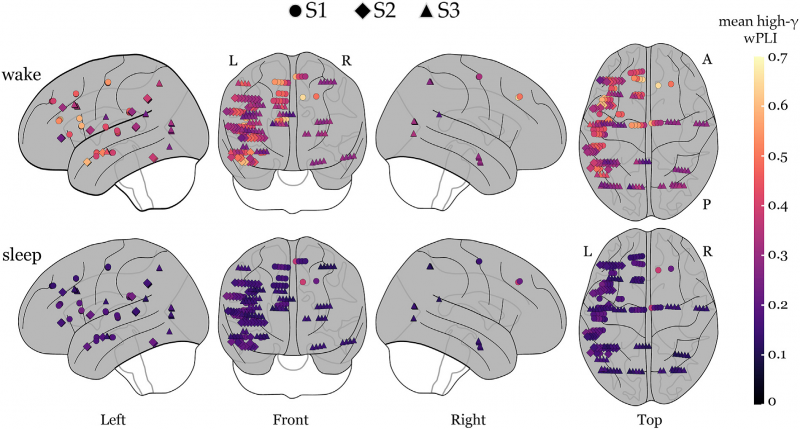Abstract:
Neural synchrony in the γ-band is considered a fundamental process in cortical computation and communication and it has also been proposed as a crucial correlate of consciousness. However, the latter claim remains inconclusive, mainly due to methodological limitations, such as the spectral constraints of scalp-level electroencephalographic recordings or volume-conduction confounds. Here, we circumvented these caveats by comparing γ-band connectivity between two global states of consciousness via intracranial electroencephalography (iEEG), which provides the most reliable measurements of high-frequency activity in the human brain. Non-REM Sleep recordings were compared to passive-wakefulness recordings of the same duration in three subjects with surgically implanted electrodes. Signals were analyzed through the weighted Phase Lag Index connectivity measure and relevant graph theory metrics. We found that connectivity in the high-γ range (90–120 Hz), as well as relevant graph theory properties, were higher during wakefulness than during sleep and discriminated between conditions better than any other canonical frequency band. Our results constitute the first report of iEEG differences between wakefulness and sleep in the high-γ range at both local and distant sites, highlighting the utility of this technique in the search for the neural correlates of global states of consciousness.


